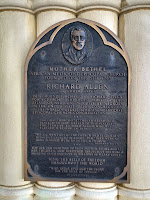Have you ever:
- thought of running away to join the circus?
- used the phrase "not my circus, not my monkey"?
- used the word "jumbo"?
- called somebody a clown?
- described a situation as a "freak show"?
If so, Sarasota Florida's Ringling Museum ( https://www.ringling.org/ )is the place for you to visit! For many years, Sarasota, on Florida's Gulf Coast, was the winter home of many traveling circuses and carnivals. Nearby Gibsonton was, and is, still a major winter home for carnival and sideshow folks. The Ringling has become one of Florida's most popular and interesting museums. Actually a museum complex, the Ringling is the result of the bequest of John Ringling, one of the most famous individuals in American circus history. In 1936, he bequeathed his art collection, mansion, and estate to the people of Florida. Unfortunately, the property was not very well taken care of until years later, when governance of the museum was transferred from the Florida Department of State to Florida State University in 2000. One can easily spend a whole day or two exploring the complex, which consists of the Circus Museum, the Ringling mansion Ca' D' Zan, the official Florida state Museum of Art, and the Bayfront Gardens.
The Circus Museum contains everything you would expect, costumes, posters, wagons, props, and there are video clips and hands-on activities like tightrope walking, etc. However, the most stunning exhibit has to be the miniature circus scenes, showing almost every aspect of circus life, comprising 44,000 handmade figures. The miniature circus alone could probably entertain visitors for a day.



































